Categories: Electrical Reviews
Number of views: 18240
Comments on the article: 1
Laser level - device and principle of operation
For the high-quality performance of construction, installation or repair work, only the knowledge of the master is not enough. For smooth bricklaying, for installing drywall partitions, and even just for deciding new wallpapers, you need to precisely mark up or at least align the elements vertically or horizontally, so that everything works out neatly and evenly.
At all times, builders and installers used a bubble level or plumb to level surfaces, this was always enough for a professional worker, to be honest. But how convenient is it to use a mechanical tool? Maybe it's time to look at the modern achievements of technological progress?
In fact, a tool has long been on sale that can not only facilitate marking, but also significantly speed up work. For those who are professionally engaged in construction and installation works, this tool will become an indispensable assistant. It's about the laser level.

Laser is used in many places today: in the printing industry, in medicine, in electrical engineering, in the military sphere - wherever high precision and a responsible approach to solving certain problems are required. Historically, in 1916, Einstein spoke about this technology, and after almost 45 years the first solid state laser - It was created by the American physicist Theodore Meyman on the basis of a ruby excited by light.
Meyman's discovery of a visible laser beam was one of the most significant discoveries made in the twentieth century, and is on a par with Planck's quantum theory. Today, the laser is also useful in such a wide area of human activity as construction, and in particular in repair work.
The laser level, or more precisely - the laser level, greatly facilitates the work. To apply the marking, it is enough to point the laser beam at the object, and the device itself will build straight horizontal and vertical lines. A person will have to make a marking with a pencil or even immediately install furniture or for example stick a tile. This is much more convenient than messing with a ruler or level hoping to shoot a vertical or horizontal line exactly manually, not to mention building a line at a certain angle.
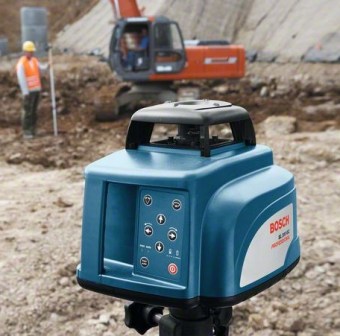
It is not surprising that today laser levels are so popular among builders, because they always have to erect a variety of designs. And repair crews? It’s also very convenient for them to repair and finish, glue wallpaper, lay tiles, erect ceilings using the laser level for even marking. And furniture assemblers cannot do without the laser level, because work with it goes much faster, especially if you install a large built-in headset or any other built-in furniture.
So, if only several organizations could afford the laser level only a few years ago, today household laser levels with a standard set of functions that more than cover the possibilities of the ruler and plumb line appeared on sale, making work more pleasant and quick.
The price of the laser level, of course, is higher than that of the usual bubble level, but the costs will certainly be justified, especially if the master works regularly. And if we are talking about one single repair? Is it worth buying an expensive level for one repair? Of course it's worth it. After all, after the repair is done, in the home one way or another there will be rearrangements, updating the interior, etc.
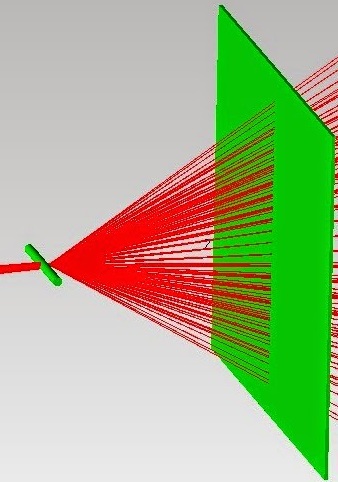
You may want to paste new wallpapers, hang a picture, a shelf, a cupboard, make a new tile in the bathroom, change the baseboard, make several additional outlets on the wall, etc.With a laser level, all these innovations can be introduced into the interior without unnecessary torment and without climbing a stepladder with a ruler and tape measure in hand.
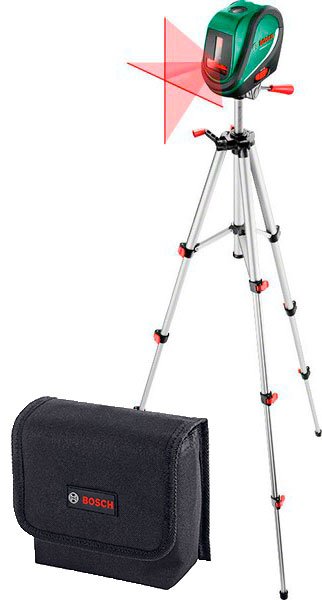
Examples of electrical work where you might need to use a laser level:
Installation of hidden electrical wiring, cable laying in the wall of the house
Installation and connection of sconces
Mounting fixtures in suspended ceilings
Installation of electrical wiring in the garage
The laser level device is rather unusual, but not very difficult. An LED light source is installed inside the housing, which generates the luminous flux for the laser. Light passes through a lens or prism (depending on the type of device), and a smooth line is obtained in the projection on the object.
The device can build lines at a distance of several tens of meters from itself. In its simplest form, the laser level is able to build two mutually perpendicular lines, more complex professional models build up to nine lines - the more projected rays - the more lines. When there are several beams, it is convenient to build a marking, for example, for laying tiles, and with four beams, you can make markings in several planes at once.
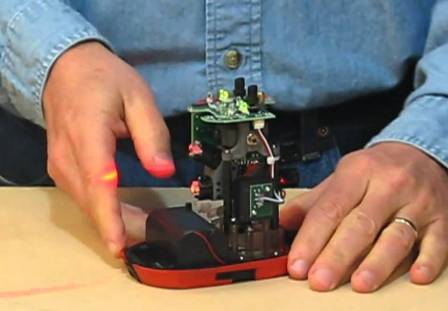
Laser levels are of two types: linear and rotational. In a linear level, the light passes through perpendicular prisms, and in the projection two mutually perpendicular rays are obtained on the plane of the object (the beam is somehow washed away by a prism into the plane by 120 degrees).
The simplest models project a point, the more complex ones - intersecting straight lines (vertical and horizontal). In rotational levels, the light is focused to a point passing through the lens, and the straight line is obtained by rotating the LED source 360 degrees around the axis.
So, using the rotational level, you can mark the room around the perimeter, at the same time the team of craftsmen can work with one device, performing work in the room at the same time. The rotation level is capable of projecting over distances of up to 100 meters.
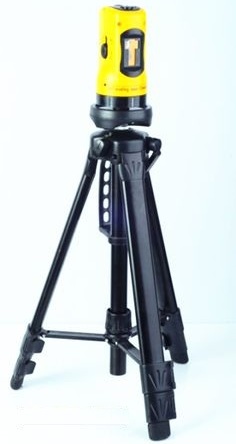
Before starting work, the level is set on a tripod, aligned manually, guided by the bubble level built into the device. More professional devices also have a built-in compensator, which makes these devices self-leveling when deviations from the horizon are within 4 degrees (a pendulum with a swinging copper tip-weight is inhibited in the magnetic field of permanent magnets by induced eddy currents). When the device is mounted on a tripod, proceed to the marking. That's all you need to know about the laser level.
Let us now summarize the features and advantages of the laser level.
-
Firstly, the use of the laser level does not require special special knowledge, it is enough to mount the device on a tripod, turn on the required marking mode (one beam, two rays or several rays), point the device to the surface, and mark along the red lines, or immediately start working with finishing or building materials. Even a novice can handle this.
-
Secondly, the use of a laser level significantly saves time and human strength. Neither a plumb line, nor a stepladder are needed, no more need to hold a plumb line in your hand while the assistant is marking up. One person will cope with everything on their own, just press the button on the device - even light lines appear on the wall or ceiling, where necessary.
-
Thirdly, the laser optical device has high accuracy. The error of a professional laser device will not exceed 0.3 mm per meter, while simpler devices will make a mistake of a maximum of 1 mm per meter.
-
Fourth, modern laser levels are distinguished by the presence of many additional functions. No plumb line or bubble level can boast of this. The laser level will build a horizontal beam, a vertical beam, make a cross, build additional control points at the zenith or nadir at the user's request.
-
Fifth, the laser tool is unpretentious in storage and easy to transport. The average professional appliance weighs no more than 3 kg, while a household appliance weighs no more than 1 kg. Robust, dustproof housing in combination with a bag or branded case - reliable protection for storage.
Those masters who first used the laser level (builders, installers, repairmen, and just people who like to do house shifts), appreciated the advantages of a progressive device. All unanimously claim that the old mechanical devices are already remnants of the past, and the choice is clearly made in favor of a modern laser device.
See also: Clamp Meter Basics
See also at bgv.electricianexp.com
:
